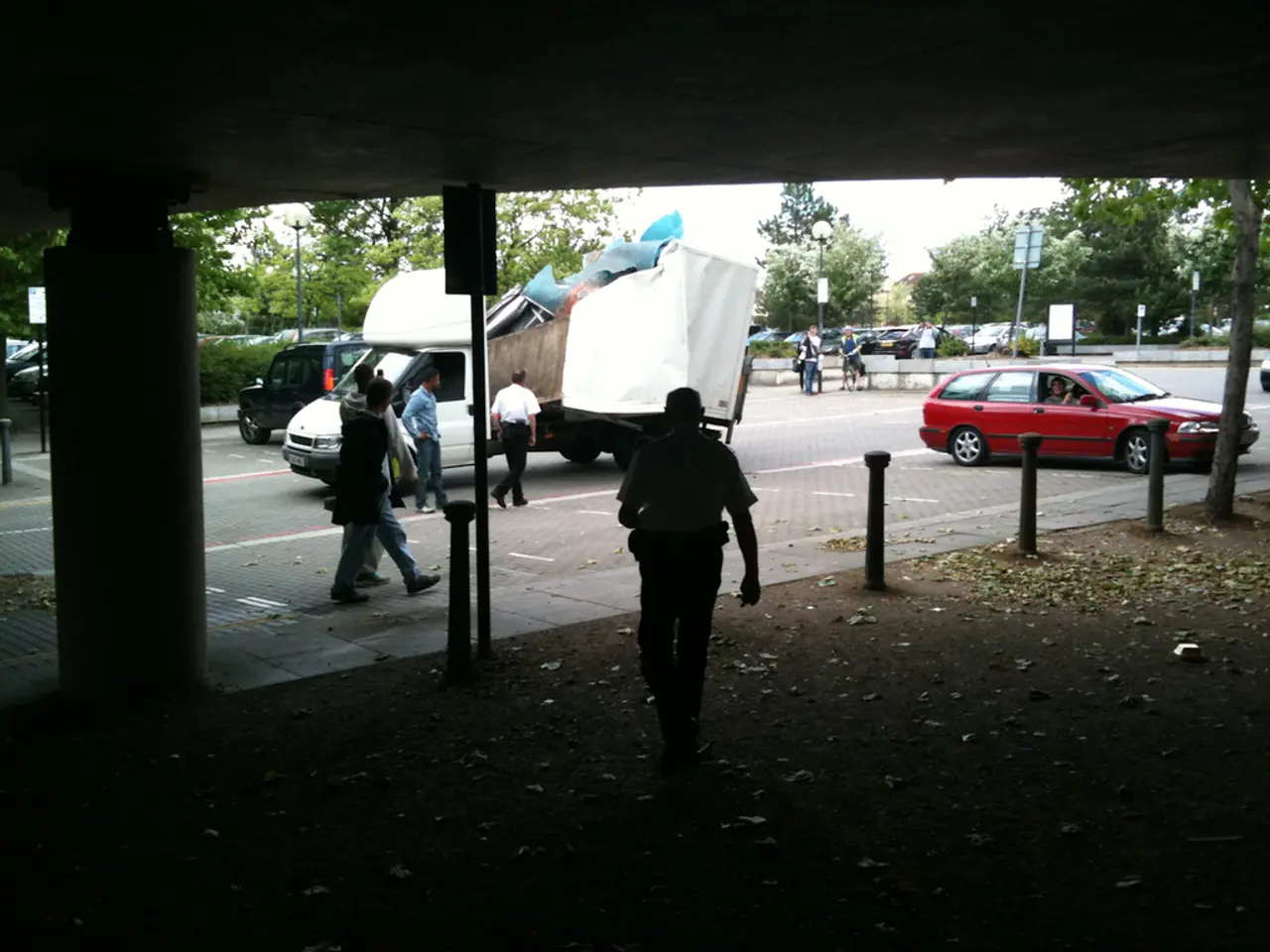Texas public transit faces critical juncture amid population growth surge
In the bustling Dallas-Fort Worth (DFW) region, where more than 80% of residents commute via automobile, a rapidly expanding population is putting pressure on already congested roadways. To meet these challenges, local authorities are proposing strategies to expand and improve public transportation.
One such strategy is the development of fare-free transit programs. The Fort Worth Independent School District (ISD) is piloting a program that allows high school students to ride Trinity Metro buses and trains for free. This initiative aims to improve access to education and community resources, potentially increasing transit usage among youth and reducing car trips.
Investment in transit infrastructure and amenities is another key focus. The City of Fort Worth has adopted the Eastside Transportation Plan, which includes major roadway reconstructions, enhanced transit shelters, and shared-use paths. These improvements aim to transform corridors into managed technology corridors with improved transit facilities, encouraging public transportation use and multimodal connectivity.
Securing funding for regional rail services is also a priority. The North Central Texas Council of Governments (NCTCOG) is seeking public input and securing funding for services such as the Heartland Flyer passenger rail connecting Fort Worth with regional destinations. This continuity and potential enhancement of commuter rail options could help reduce roadway congestion.
Dallas Area Rapid Transit (DART) is also playing a significant role in these efforts. Serving 13 cities with buses, trains, on-demand services, and paratransit, DART's GoPass app improves the rider experience with real-time trip planning and fare payment, encouraging transit ridership.
A multimodal approach is being taken in Fort Worth, where $182 million has been allocated for reconstructing key corridors with transit shelters and shared paths integrated with roadway upgrades. This combination of road enhancements and transit supports aims to address traffic congestion reduction effectively.
Regional cooperation will be essential to moving North Texas forward amidst rapid population growth. The takeaway for transportation planners is that transit can only help alleviate roadway pressure if it's competitive with what many Texans see as the comfort and convenience of driving.
These strategies focus on expanding fare-free access for key populations, investing in transit infrastructure and amenities, securing funding for regional rail services, enhancing multimodal transit options through agencies like DART, and integrating transit improvements with roadway modernization projects.
The results of these efforts are already evident in places like Grapevine, where a surge in real estate values and economic activity has been observed around transit stations between 2020 and 2023. As these strategies continue to be implemented, North Texas is poised to transform its transportation landscape, meeting the needs of its growing population and addressing congestion challenges head-on.
[1] Fort Worth Independent School District (ISD) Pilots Free Transit Program for High School Students [2] City of Fort Worth Adopts Eastside Transportation Plan with Major Roadway Reconstructions [3] North Central Texas Council of Governments (NCTCOG) Seeks Funding for Heartland Flyer Passenger Rail [4] Dallas Area Rapid Transit (DART) Introduces GoPass App for Improved Rider Experience [5] Heartland Flyer Passenger Rail: A Potential Solution to North Texas' Congestion Challenges?
- To support the education and community involvement of high school students in Fort Worth, the Fort Worth Independent School District (ISD) has piloted a program allowing free use of Trinity Metro buses and trains.
- Recognizing the importance of enhancing public transportation infrastructure, the City of Fort Worth has adopted the Eastside Transportation Plan, which includes major roadway reconstructions, improved transit facilities, and shared-use paths.
- In efforts to secure funding for regional rail services and reduce roadway congestion, the North Central Texas Council of Governments (NCTCOG) is seeking public input and funding for services like the Heartland Flyer passenger rail connecting Fort Worth with regional destinations.




